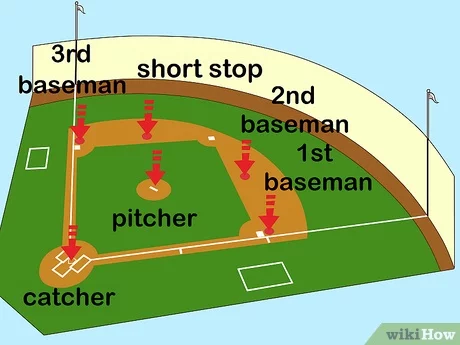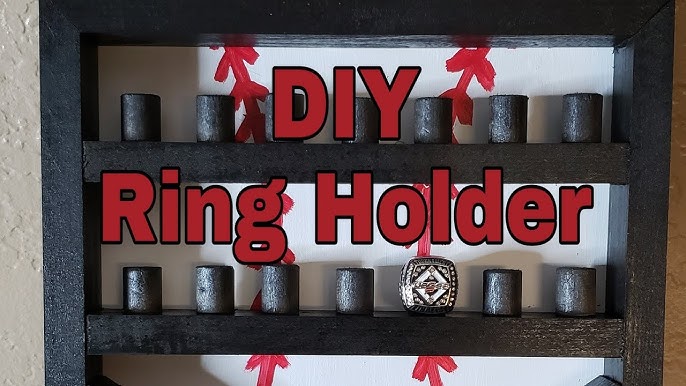Playing baseball can be a thrilling experience. It’s a classic sport enjoyed by millions.
Baseball is a game that blends skill, strategy, and teamwork. Whether you’re a beginner or looking to improve, understanding the basics is crucial. This guide will walk you through the essential steps to play baseball. From learning the rules to mastering the fundamentals, you’ll gain the knowledge needed to get started.
Baseball is not just about hitting the ball; it’s about knowing how to field, pitch, and run the bases. Each position requires different skills and techniques. By the end of this guide, you’ll have a better grasp of the game and feel more confident on the field. Ready to play ball? Let’s dive in!

Credit: www.youtube.com
Introduction To Baseball
Welcome to the exciting world of baseball! Whether you’re new to the game or looking to refresh your knowledge, this guide will provide you with a solid foundation. Baseball is a team sport that combines strategy, skill, and athleticism. Let’s dive into the basics and learn more about this beloved sport.
Brief History
Baseball has a rich history that dates back to the 18th century. It began in England with a game called “rounders.” Immigrants brought rounders to North America, where it evolved into modern baseball. By the mid-19th century, baseball had become a popular sport in the United States. The first professional team, the Cincinnati Red Stockings, formed in 1869. Today, baseball is played worldwide and is especially popular in the United States, Japan, and Latin America.
Basic Rules
Baseball is played between two teams of nine players each. The game takes place on a diamond-shaped field. The objective is to score runs by hitting the ball and running around four bases. The team with the most runs at the end of nine innings wins.
A game starts with a pitcher throwing the ball to a batter from the opposing team. The batter tries to hit the ball into play. If the batter hits the ball, they run to first base. They can continue running to the next bases if the ball is not caught or fielded quickly. Fielders try to catch the ball or throw it to a base to get the runner out. There are three outs per inning for each team.
Pitches can be strikes or balls. A strike is a pitch the batter misses or doesn’t swing at within the strike zone. A ball is a pitch outside the strike zone that the batter doesn’t swing at. Four balls result in a “walk,” allowing the batter to go to first base. Three strikes result in a strikeout, and the batter is out.
Understanding these basic rules will help you enjoy and appreciate the game of baseball. Grab a glove, and let’s play ball!
Essential Equipment
Baseball is an exciting sport that requires specific equipment. Using the right gear ensures safety and improves your performance. In this section, we will discuss the essential equipment you need to play baseball, including bats and balls, as well as gloves and protective gear.
Bats And Balls
A baseball game can’t happen without the right bat and ball. Here’s what you need to know:
- Bats: Bats come in different materials such as wood, aluminum, and composite. Wooden bats are traditional and often used in professional leagues. Aluminum and composite bats are lighter and more durable, making them popular in amateur leagues.
- Balls: Baseballs have a cork center wrapped in yarn and covered with leather. They are roughly 9 inches in circumference and weigh about 5 ounces. The stitching on the leather cover is crucial for grip and control during pitches.
Gloves And Protective Gear
Safety is paramount in baseball. Proper gloves and protective gear can prevent injuries:
- Gloves: Different positions require different gloves. For example, a catcher’s mitt is heavily padded, while an outfielder’s glove is longer for catching fly balls. Infielders use smaller gloves for quick throws.
- Protective Gear: Helmets are essential for batters to protect their heads from pitches. Catchers wear chest protectors, shin guards, and masks to shield themselves from wild pitches and foul tips. Additionally, many players wear batting gloves to improve grip and reduce blisters.
| Equipment | Purpose |
|---|---|
| Bat | Hit the ball |
| Ball | Pitch, hit, and catch |
| Glove | Catch the ball |
| Helmet | Protect the head |
| Chest Protector | Protect the chest |
| Shin Guards | Protect the legs |
| Mask | Protect the face |
Using the right equipment can make a big difference in your game. Ensure you choose the best gear suited for your position and skill level.
Field Layout And Positions
Learning to play baseball involves understanding the field layout and positions. The field is divided into the infield and the outfield. Each part has specific roles crucial for the game. Knowing these positions helps in better coordination and gameplay.
Infield Positions
The infield is the area closest to the bases. It includes four key positions. The pitcher stands on the pitcher’s mound. They throw the ball to the batter. The catcher squats behind home plate. They catch pitches the batter misses. The first baseman stands near first base. They catch throws and tag out runners. The second baseman is positioned between first and second base. They field ground balls and turn double plays.
The shortstop is between second and third base. They cover a lot of ground and make quick throws. Finally, the third baseman stands near third base. They field bunts and hard grounders. Each infield position has specific duties. Together, they prevent runs and make plays.
Outfield Positions
The outfield covers the grassy area beyond the infield. It has three main positions. The left fielder stands in left field. They catch fly balls and field grounders. The center fielder covers the most ground. They play between left and right field. They must be fast and have a strong arm. The right fielder stands in right field. They catch fly balls and throw to the infield.
Outfielders work together to prevent hits from becoming extra bases. Communication is key. They must call for the ball and back up each other. Understanding these positions helps players perform better. It makes the game more enjoyable.
Batting Techniques
Mastering batting techniques is crucial for any baseball player. It involves several key elements. These include the proper stance and effective swing mechanics. Focusing on these areas will improve your batting skills significantly.
Proper Stance
A good batting stance sets the foundation for a successful hit. Stand with your feet shoulder-width apart. This ensures balance and stability. Bend your knees slightly to stay flexible. Keep your weight on the balls of your feet. This position allows quick movement.
Hold the bat firmly but relaxed. Your grip should not be too tight. Keep your hands at shoulder height. Position the bat at an angle over your back shoulder. Your eyes should focus on the pitcher. This stance prepares you for a powerful and accurate swing.
Swing Mechanics
Effective swing mechanics are vital for hitting the ball well. Start with a small step forward. This helps transfer your weight. Keep your hands back and your eyes on the ball. Begin your swing by rotating your hips and shoulders. This generates power.
As you swing, extend your arms fully. Follow through with the bat after making contact. This ensures maximum impact. Maintain balance throughout the swing. Practice these mechanics regularly. This will improve your batting performance over time.
Pitching Skills
Pitching is a crucial part of baseball. It requires skill and precision. As a pitcher, your main job is to throw the ball to the catcher. The goal is to make it difficult for the batter to hit the ball. To achieve this, you need to learn different pitching skills. These skills include grip and release and understanding pitch types.
Grip And Release
The way you grip the ball affects its speed and direction. There are different grips for different pitches. For a fastball, place your index and middle fingers across the seams of the ball. Your thumb should be underneath the ball. Hold the ball lightly with your fingertips. This grip helps the ball move straight and fast.
For a curveball, place your middle finger along the bottom seam. Your index finger should rest next to your middle finger. Your thumb supports the ball from below. This grip creates a spin that makes the ball curve. Practice these grips often. A consistent grip improves your control and accuracy.
The release is just as important as the grip. Release the ball with a flick of your wrist. Your fingers should roll off the ball smoothly. This motion adds speed and spin to the pitch.
Pitch Types
There are several types of pitches. Each pitch has a unique grip and release. The fastball is the most common pitch. It moves quickly and is hard to hit. The curveball is slower but has a sharp downward motion. This makes it difficult for the batter to predict.
Another pitch is the slider. It is a mix between a fastball and a curveball. The slider moves sideways and down. The changeup is a slower pitch that looks like a fastball. This pitch tricks the batter into swinging too early.
Learn the grip and release for each pitch. Practice regularly to improve your pitching skills. With time, you will develop a variety of effective pitches. This will make you a better pitcher.

Credit: www.wikihow.com
Fielding Fundamentals
Fielding is a crucial part of playing baseball. Good fielding can make or break a game. In this section, we will discuss essential fielding skills. These skills will help you become a better baseball player. Let’s dive into the basics of catching and throwing.
Catching Techniques
Catching the ball is vital for any baseball player. Here are some techniques to improve your catching:
- Positioning: Stand with your feet shoulder-width apart. Stay balanced and ready to move.
- Glove Placement: Keep your glove open and fingers up. This helps you catch high balls.
- Eye on the Ball: Always watch the ball. Follow its path until it lands in your glove.
- Soft Hands: Use soft hands to absorb the ball’s impact. This reduces the chance of dropping it.
Throwing Accuracy
Throwing the ball accurately is just as important as catching it. Here are some tips for better throwing:
- Grip the Ball: Hold the ball with your index and middle fingers across the seams. This gives better control.
- Step and Throw: Step towards your target as you throw. This helps you gain momentum and power.
- Follow Through: After releasing the ball, follow through with your arm. This ensures accuracy and strength.
- Practice: Regular practice improves your muscle memory. The more you practice, the better your throws will be.
By focusing on these fielding fundamentals, you can enhance your baseball skills. Catching and throwing are the building blocks of a strong defense. Practice these techniques to become a reliable fielder.
Base Running Strategies
Base running in baseball is a crucial skill that can change the outcome of a game. Knowing how to effectively run the bases requires practice and strategic thinking. Learning base running strategies will help players make smart decisions on the field.
Speed And Agility
Speed and agility are essential for successful base running. A fast runner can reach the next base before the fielders can react. Agility helps a player change direction quickly and avoid tags. Practicing sprints and agility drills will improve these skills. Players should focus on quick starts and maintaining top speed.
Stealing Bases
Stealing bases can surprise the opposing team and create scoring opportunities. To steal a base, a player needs to read the pitcher’s movements and choose the right moment to sprint. Good timing is key. Practice getting a quick jump off the base. Pay attention to the pitcher’s habits and the catcher’s skills. Not every situation is right for a steal. Players must be smart and assess the risk before making a move.

Credit: study.com
Game Strategies
Understanding game strategies in baseball is crucial for success. These strategies can make the difference between winning and losing. Let’s explore some key offensive and defensive tactics.
Offensive Plays
Offensive plays focus on scoring runs and advancing players around the bases. One popular tactic is the bunt. This involves lightly tapping the ball to move runners forward. Another key play is the hit-and-run. Here, a runner starts to steal a base as the batter hits the ball. This can catch the defense off guard.
Stealing bases is another exciting tactic. A player runs to the next base while the pitcher is throwing. Speed and timing are crucial for this play. Sacrifice flies also play a vital role. The batter hits a fly ball deep enough to allow a runner to score from third base. Each of these plays requires practice and precision.
Defensive Tactics
Defensive tactics aim to prevent the opposing team from scoring. One critical tactic is the double play. This involves getting two outs in one play. Typically, this happens with a ground ball to the infield. Another essential defensive play is the cut-off. This helps relay the ball quickly from the outfield to the infield.
Positioning also plays a significant role. Players must be in the right place at the right time. Shifting the infield can anticipate where the batter might hit. Pitchers use various pitches to confuse batters. Curveballs, fastballs, and sliders each have different effects.
Effective communication is key. Players must talk to each other to avoid mistakes. Calling out plays and positions helps maintain a strong defense. Practicing these tactics will improve your team’s performance.
Training And Drills
Training and drills are essential parts of learning how to play baseball. Players need to focus on both physical conditioning and skill-building. This ensures they perform their best on the field. Let’s explore some key exercises and drills.
Conditioning Exercises
Baseball players need to be in great physical shape. Conditioning exercises help improve strength, speed, and endurance. Start with running drills. These include sprints and long-distance runs. Running builds stamina and increases speed.
Next, focus on strength training. Use exercises like push-ups, sit-ups, and squats. These exercises strengthen core muscles. Strong core muscles help with batting and throwing. Use weights or resistance bands for added intensity.
Don’t forget flexibility. Stretching exercises reduce the risk of injuries. Try stretches like hamstring stretches, calf stretches, and shoulder stretches. Flexibility keeps your muscles loose and ready for action.
Skill-building Drills
Skill-building drills improve specific baseball techniques. Start with batting practice. Use a tee or soft toss to practice hitting. Focus on your stance, grip, and swing.
Fielding drills are also important. Practice catching ground balls and fly balls. Work on your throwing accuracy by aiming at specific targets.
Pitching drills help improve your pitching technique. Practice different pitches like fastballs, curveballs, and sliders. Work on your pitching form and control.
Don’t overlook base running drills. Practice running from base to base. Learn how to slide and steal bases. This makes you a more versatile player.
By focusing on these exercises and drills, you can improve your baseball skills. Consistent practice is key to becoming a better player.
Common Mistakes To Avoid
Baseball can be a complex sport, especially for beginners. Understanding common mistakes can help you improve faster. This section highlights key errors to avoid, making your baseball journey smoother.
Batting Errors
Many players grip the bat too tightly. This can slow your swing. Relax your grip for better control and speed. Another common mistake is improper stance. Stand with feet shoulder-width apart. Keep your knees slightly bent. This gives you balance and power.
Watch the ball. Players often look away too soon. Keep your eyes on the ball until you hit it. Swinging too hard is another error. Focus on contact, not power. A smooth, controlled swing is more effective.
Fielding Errors
Fielding requires focus and positioning. A common mistake is standing too upright. Bend your knees and stay low. This helps you react quickly. Misjudging fly balls is another issue. Practice reading the ball’s trajectory.
Don’t forget to communicate with teammates. Lack of communication can cause errors. Always call for the ball. Finally, rushing throws leads to mistakes. Take your time to aim. Accuracy is more important than speed.
Frequently Asked Questions
What Are The Basic Rules Of Baseball?
Baseball has nine players on each team. Teams take turns batting and fielding. The batting team tries to score runs. The fielding team tries to get three outs. The game has nine innings.
How Do You Score In Baseball?
To score, a player must hit the ball and run around four bases. The player must reach home plate without getting out.
What Equipment Is Needed To Play Baseball?
Players need a bat, a ball, a glove, and protective gear. Uniforms and cleats are also important for safety and performance.
How Long Is A Baseball Game?
A standard baseball game lasts nine innings. Each inning consists of both teams having a turn to bat and field.
Conclusion
Playing baseball can be fun and rewarding. Practice the basics regularly. Focus on hitting, throwing, and catching. Remember, teamwork is important. Support your teammates and communicate well. Enjoy the game and always keep learning. With time, you will improve. Grab your glove, head to the field, and start playing today.
Baseball is a game of skill and patience. Have fun and stay positive. Ready to hit a home run? Let’s play ball!



